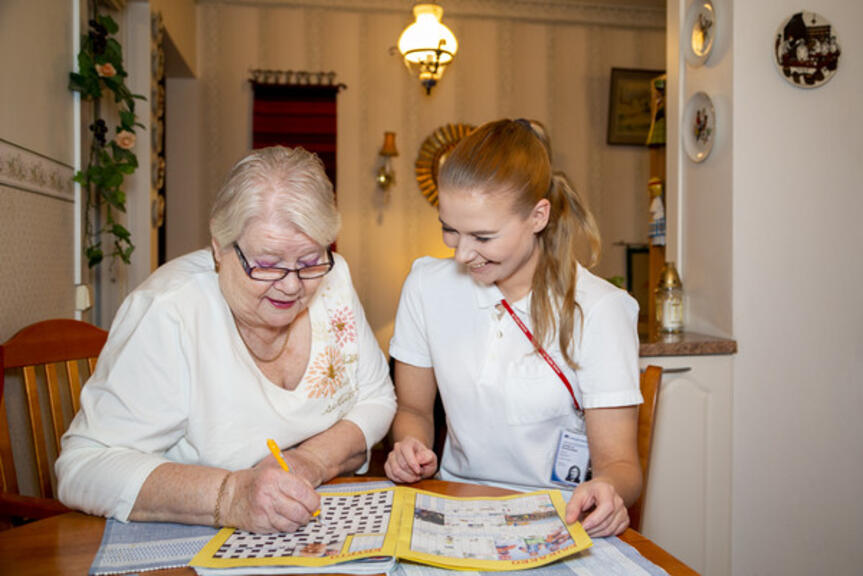
Despite the year being marked by the coronavirus pandemic, customers gave home care services a score of 8.19 on a scale of 4 to 10. The score was almost the same as in 2018 (8.2). As many as three out of four respondents rated the home care services as good, very good or excellent.
“We have worked persistently to develop home care. In the last few years, we have hired more than a hundred new employees in home care services, for example. There is always room for improvement, and the development will continue, but we can be happy with these results,” says Soili Partanen, service district director in charge of home care development.
“It is also great that customer satisfaction is at the same level in all service areas. Our goal is to ensure equal access to services to everyone, and we are on the right track in that,” Partanen adds.
The highest score (8.43) was given to medication distribution, with which the customers have generally been very happy. Remote care fared the worst with a score of 7.86.
Nurses receive praise in particular for their friendliness
Of the respondents, 95 per cent felt that home care personnel treat them in a friendly manner. 79 per cent felt that the nurses always or often have time to take care of the matters agreed on without rushing.
Most calls to customers’ homes involved medical treatment (67%), assistance for taking medication (46%) and assistance with washing (46%). The area where additional assistance was needed the most was going outdoors (20%).
“66 per cent of the respondents said they also receive day-to-day assistance from their children and other close relatives, in addition to home care. Close relatives have a significant role to play in customers’ everyday management and things like supporting daily movement,” says Partanen.
Dialogue with families and customers must be developed
Of the customers who responded, 40 per cent did not know who their nurse in charge was. Almost one of out five were unclear as to whether a service and care plan had been made for them.
“During the coronavirus pandemic, we have not been able to hold Q&A or discussion events for families and customers, but we will resume them as soon as possible. For us, it is important to have a dialogue with customers and their families about the purpose of home care and the services available. We also wish to receive feedback on our work,” Partanen says.
The areas for development also include supporting the daily movement of the customers. Of the customers who responded, only one out of four had been doing physical exercises.
“The home care services employ a mobility agreement, which is a part of the service and care agreement. We add the mobility goals agreed on with the customer into the agreement to support their well-being and everyday management. The goals may include walking to the letterbox, for example. The use of the agreement is constantly being expanded, and it is also a part of the City’s Physical Activity Programme,” Partanen says.
The customer survey was carried out in October 2020. A total of 2,153 customers responded, putting the response rate at 33%. The customer survey has been carried out regularly from 2006 onwards, about every other year. In the survey, the respondents answered to statements presented to them. They were also able to provide open feedback.
Home care refers to home nursing and home services. Home care employees are also responsible for arranging support services, such as shopping, washing, preparing food and cleaning. Certain visits can be arranged as remote visits.
There are currently about 7,000 regular customers of home care services in Helsinki. More than 3 million home visits are made every year.
Picture: Maarit Hohteri, 2019


